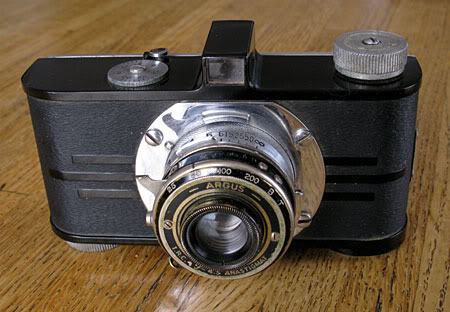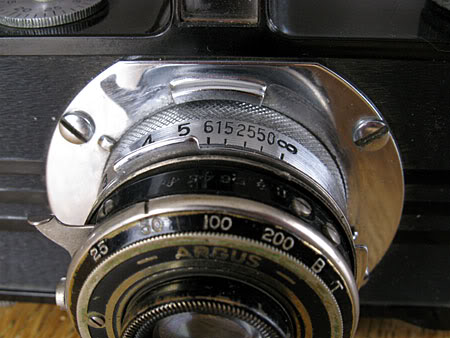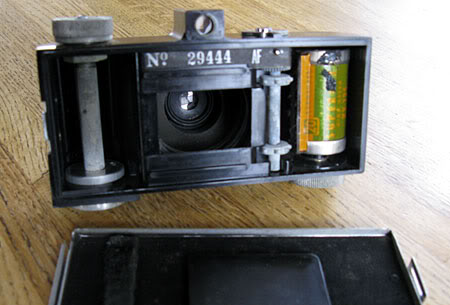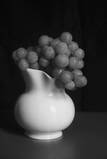home vintage cameras index




Additional historical information on the Argus A line of cameras can be found in my web site article about the Argus A2F.
This particular camera was advertised on ebay as an Argus A, and I acquired it for one dollar. On unwrapping the camera I twisted the lens to extend it to its operating position and was pleased to find that it was in fact a model AF. On opening the back, I was again surprised to find an ancient Kodak Super XX film cartridge. I thought perhaps I would be able to retrieve some of the original owner's images from the camera, but the cartridge contained no film.
The camera only required some minimal cleaning to get it near to its original operating capacity. The lens was quite foggy, but some lighter fluid and lens cleaner took care of that. The shutter was working pretty well at all speeds except for the B and T settings. To clean the shutter, I removed the name plate and the underlying speed dial, but I left the cam plate in place and just reached in under it with a brush loaded with lighter fluid to swab the linkage contolling the B and T settings. The final step was to replace the deteriorated foam pad on the inside back of the camera which secures the film cartridge.
Shooting close-ups with the AF is a bit easier than with the later A2F because the viewfinder is centered on the body, so one only has to compensate for parallax error in one dimension. In shooting at the minimal focal distance of 1.25 feet I start by just aligning the medial axis of the lens with the subject and then make a last fine adjustment of the camera position through the viewfinder. The f11 minimum aperture does not provide much depth of focus, so using a tripod, a cable release and a measuring tape helps ensure sharp images.
As was the case with my A2F, the AF images show some vignetting at the corners as can be seen in the photo below of my house in Albuquerque. The lens is not the sharpest in my collection, but I very much like the tonal qualities it produces.
Below are some of my photos from the Argus AF:

|

|

|
 | ||
home vintage cameras index
 © mike connealy
© mike connealy